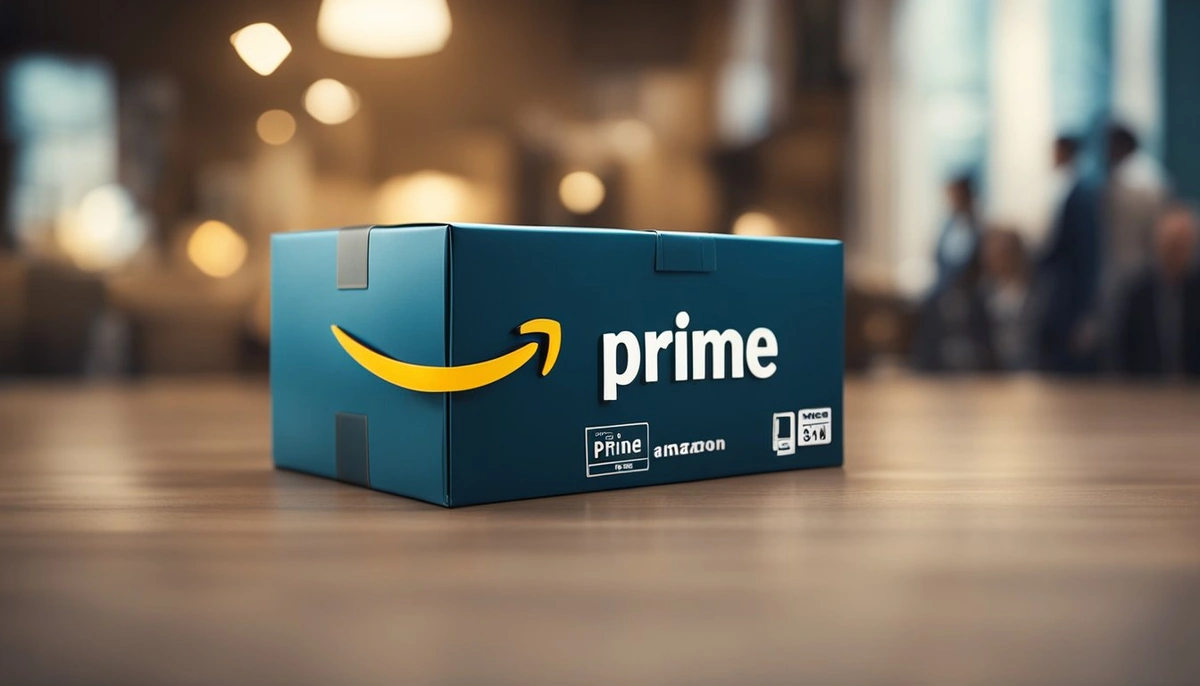In 2005, Amazon altered the online marketplace forever with the launch of Amazon Prime—but how has that propelled your sales strategy since? The inception of Amazon Prime has revolutionized not only customer expectations but also the way sellers approach the market, packaging opportunities, and expedited growth into a neat, Prime-branded box.
For Amazon sellers, understanding the timeline and the expansion of Prime is crucial for leveraging the full suite of benefits that come with this service. Prime membership not only entices customers with free two-day shipping but also grants sellers access to a premium user base that is primed (pun intended) to spend. From priority placement in the Buy Box to increased visibility and customer trust, the perks of aligning with Prime can catapult your store's performance.
But it's not just about shipping perks. Amazon Prime also has expanded to include an array of tools designed to optimize seller performance and satisfaction. From Prime-exclusive promotions to the treasure trove of analytics, the platform provides actionable insights that can transform the way you do business. In this blog, we dive deep into the Prime phenomenon, chart its growth, and reveal how to tap into its potential to amplify your sales, satisfaction, and success on Amazon.
Origins of Amazon Prime
Concept and Development
Amazon Prime, a subscription service offered by Amazon.com, was first introduced in the United States in 2005. The service was initially designed to offer free two-day shipping on eligible purchases for a yearly fee of $79. This concept was developed by Amazon as a way to incentivize customers to shop more frequently on their website.
Over time, Amazon Prime has evolved to include additional benefits such as access to streaming of movies, TV shows, and music, as well as unlimited photo storage, early access to lightning deals, and free same-day delivery in eligible zip codes.
Official Launch Date
Amazon Prime was officially launched on February 2, 2005, after being in beta testing for a few months. The service was initially only available to customers in the United States, but has since expanded to other countries such as Canada, the United Kingdom, and India.
Since its launch, Amazon Prime has become a popular subscription service with millions of members worldwide. As of 2021, Amazon Prime has over 200 million subscribers globally, making it one of the largest subscription services in the world.
Early Features of Amazon Prime
Initial Benefits
When Amazon Prime was first launched in 2005, it offered a number of benefits to its members. These benefits included free two-day shipping on eligible items, as well as discounted one-day shipping rates. Members also had access to unlimited streaming of movies and TV shows through Amazon's Instant Video service.
Subscription Model
Amazon Prime was initially offered as a yearly subscription service, with a fee of $79 per year. This fee provided members with access to all of the benefits of the service, including free shipping and streaming of movies and TV shows.
Over time, Amazon added additional benefits to the service, such as access to free e-books through the Kindle Owners' Lending Library, unlimited photo storage through Amazon Cloud Drive, and early access to certain lightning deals on the Amazon website.
Today, Amazon Prime remains a popular subscription service, with millions of members worldwide. While the cost of the service has increased over the years, many customers still find it to be a valuable investment due to the wide range of benefits it provides.
Expansion and Growth
Global Reach
Since its inception in 2005, Amazon Prime has grown exponentially, expanding its reach globally. Amazon Prime is now available in over 17 countries, including the United States, Canada, the United Kingdom, Japan, and Germany. With over 150 million subscribers worldwide, Amazon Prime has become one of the most popular subscription services globally.
Service Enhancements
Over the years, Amazon Prime has continued to enhance its services, adding new features and benefits for its subscribers. In 2011, Amazon introduced the Kindle Owners' Lending Library, which allowed Prime members to borrow Kindle books for free with no due dates. In 2014, Amazon launched Prime Music, a streaming service that offers ad-free access to over two million songs. In 2015, Amazon introduced Prime Now, a service that offers delivery of select items within two hours for Prime members in select cities.
In addition to these services, Amazon has also expanded its Prime Video offerings, with original content such as The Marvelous Mrs. Maisel, The Man in the High Castle, and Transparent, among others.
What is Prime Day?
Prime Day, Amazon's exclusive shopping holiday, has quickly become a highly anticipated event for both consumers and sellers alike. Occurring annually, this event offers a whirlwind of deals for Amazon Prime members over a 48-hour period. For sellers, Prime Day is a golden opportunity to drive traffic, increase sales, and attract new customers.
Maximizing Sales and Exposure
The importance of Prime Day for sellers cannot be overstressed. With millions of shoppers actively searching for deals, the event promises a surge in sales that could potentially rival the holiday season. It is a chance for sellers to showcase their best products, clear out old inventory, and increase their products' rankings through heightened sales velocity.
Building Brand Recognition
For new and existing sellers alike, Prime Day offers a platform to elevate brand recognition. By participating in Prime Day deals, sellers can introduce their brands to a broader audience, benefiting from the massive exposure that comes with the event. This can lead to increased brand awareness and customer loyalty long after the event has concluded.
Driving Long-Term Growth
The ripple effects of a successful Prime Day can extend far beyond the event itself, setting the stage for sustained growth. The influx of new customers acquired during Prime Day has the potential to turn into repeat buyers, provided they have a positive experience with the brand. Additionally, the increased sales can lead to higher product and seller rankings on Amazon, which enhances visibility and credibility in the long run.
For sellers, Prime Day is far more than just a 48-hour sales spike; it's a strategic moment to align your business with Amazon's vast Prime audience, capitalize on the platform's traffic, and set a trajectory for growth. Leveraging this event with well-planned promotions, competitive pricing, and strategic advertising can transform an ordinary sales quarter into an extraordinary one.
Amazon Prime's Impact on E-Commerce
Consumer Behavior
Amazon Prime has had a significant impact on consumer behavior in the e-commerce industry. With the introduction of free two-day shipping and other benefits, consumers have become more likely to make purchases online. According to a survey conducted by Statista, 82% of Amazon Prime members in the United States said they were more likely to buy products online after becoming a member.
The convenience of free and fast shipping has also led to an increase in impulse buying. Consumers can easily browse through products and make a purchase without having to worry about shipping costs or long delivery times. This has led to an increase in sales for Amazon and other e-commerce retailers.
Market Competition
The introduction of Amazon Prime has also had a significant impact on market competition. Other e-commerce retailers have had to adapt to keep up with Amazon's offerings. Many retailers have introduced their own loyalty programs and free shipping options to compete with Amazon.
However, Amazon's dominance in the e-commerce industry has made it difficult for smaller retailers to compete. According to eMarketer, Amazon is expected to account for 38% of all online retail sales in the United States in 2024. This has led to concerns about the impact of Amazon's dominance on competition and consumer choice.
Amazon Prime's Impact on Sellers
Amazon Prime hasn't just changed the game for consumers—it's rewritten the playbook for Amazon sellers, too. The program's rapid adoption has fostered a marketplace where speed, efficiency, and customer loyalty reign supreme. For sellers, this translates to several tangible benefits that can substantially impact their bottom line.
Increased Visibility and Buy Box Advantage
A key benefit for sellers is the prominence of Prime-eligible products, which often translates to increased visibility on Amazon's crowded marketplace. Prime listings are more likely to win the coveted Buy Box. Since Prime members tend to filter search results to show only Prime-eligible items, winning the Buy Box often means gaining a direct pathway to this vast and growing customer base.
Higher Customer Trust and Conversion Rates
The Prime badge is also a symbol of trust and quality in the eyes of consumers. Products associated with Prime are often perceived as more reliable, which can significantly increase conversion rates. The promise of fast, free shipping and the ease of returns make Prime products particularly appealing, leading to more frequent and larger purchases.
Access to Prime Day and Prime-Exclusive Promotions
Prime Day, Amazon's flagship shopping event, is a boon for sellers. It's an exclusive promotional period where millions of Prime members flock to the site searching for deals. Sellers can capitalize on this shopping frenzy by offering Prime-exclusive discounts, which can lead to a substantial spike in sales and can also help clear out inventory.
How to Leverage Amazon Prime for Your Business
Understanding the perks of Amazon Prime is one thing, but knowing how to strategically take advantage of these features can set your business apart. Here's how you can harness the power of Prime:
Enroll in Fulfillment by Amazon (FBA)
One way to make your products Prime-eligible is by enrolling in Amazon's Fulfillment by Amazon (FBA) program. By doing so, Amazon takes care of storage, packing, shipping, customer service, and returns for your products. This not only provides the Prime badge but also frees up your time to focus on other aspects of your business, like sourcing products or expanding your brand.
Optimize Listings for Prime Search Filters
Prime members often filter search results to show only Prime-eligible products. Therefore, it's crucial to ensure your product listings are optimized for these filters. This means using high-quality images, detailed and accurate product descriptions, competitive pricing, and gathering positive customer reviews, which all contribute to better search visibility.
Participate in Prime-Exclusive Promotions
Take full advantage of Prime-exclusive promotions, such as Prime Day or Lightning Deals, to attract more customers. By offering limited-time discounts, you can not only increase sales volume but also encourage new customers to try your products, potentially leading to repeat purchases and long-term customer relationships.
Monitor Performance and Utilize Prime Analytics
Amazon provides sellers with robust analytics tools that can offer valuable insights into customer behavior, inventory management, and more. Keeping an eye on these metrics can help you make informed decisions, tailor your strategy to Prime members' preferences, and optimize your inventory for peak times like Prime Day or the holiday shopping season.
By fully embracing the services and tools that Amazon Prime offers, sellers can significantly boost their visibility, increase sales, and build a loyal customer base that returns time and time again.
Conclusion
Amazon Prime has not only transformed consumer shopping habits but also created a fertile ground for sellers to flourish. The service's introduction marked a pivotal moment where convenience, speed, and customer loyalty became paramount to e-commerce success. For Amazon sellers, Prime offers a gamut of benefits that, when utilized effectively, can lead to increased visibility, higher conversion rates, and ultimately, a thriving business.
Adapting to the Prime ecosystem may require an upfront investment, particularly if you decide to leverage Fulfillment by Amazon, but the potential returns cannot be overstated. Prime eligibility can be the gateway to tapping into Amazon's loyal customer base, taking part in exclusive high-traffic events, and leveraging the trust that the Prime badge carries.
As you consider the myriad ways to optimize your presence on Amazon, remember that visibility goes beyond Prime eligibility. Effective advertising strategies, like running Amazon PPC campaigns, are also essential for driving traffic and sales to your listings. Learn more about running an Amazon PPC campaign to complement your Prime-enabled products here.
By harnessing the power of Amazon Prime and strategic advertising, you can position your business for exceptional growth and redefine success on the world's largest online marketplace. Good luck!
Frequently Asked Questions
When did Amazon Prime start getting popular?
Amazon Prime started getting popular in 2011 after Amazon introduced a monthly subscription option for the service. This made it more accessible to customers who couldn't afford the annual subscription fee.
When was Amazon's first Prime Day?
Amazon's first Prime Day was on July 15, 2015. It was a one-day event where Amazon offered exclusive deals and discounts to Prime members.
How many times a year is Prime Day?
Prime Day is typically held once a year, usually in July. However, in recent years, Amazon has also held a second Prime Day in October.
Why was Amazon Prime created?
Amazon Prime was created to provide customers with fast and free shipping on millions of items. Over time, Amazon added more benefits to the service, such as streaming of movies, TV shows, and music, as well as exclusive deals and discounts.



 Scale Insights Team
Scale Insights Team





